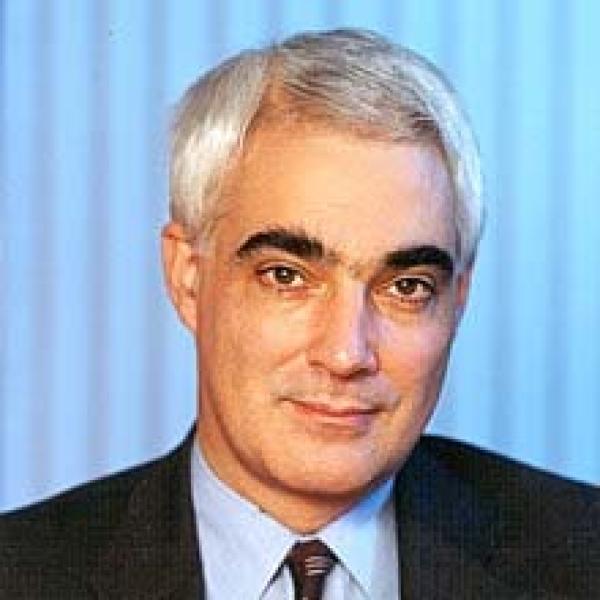School funding is in the headlines again as the government tries to rationalise the current system. This rationalisation is long overdue but it is happening at a time when funding is tighter than at any time over the last 30 years. The inevitable result is that some schools will lose out. But the bigger story over the longer term is that schools have done rather well in terms of funding per pupil. Spending on sixth forms and further education, by contrast, has been continually squeezed. Spending per pupil in school is set to be at least 70% higher in 2020 than it was in 1990. Spending per pupil in sixth forms and FE is set to be no higher at all than it was in 1990.
These are among the findings from a new report by IFS researchers published today: Long-Run Comparisons of Spending per Pupil across Different Stages of Education, funded by the Nuffield Foundation. For the first time, this report provides consistent data on day-to-day or current spending per pupil on different stages of education in England over a long time period. The main graph for spending per pupil across different stages of education over time is shown in the notes to editors and all figures are presented in 2016–17 prices.
Key findings:
- Early years education spending is now £2.3 billion a year, up from close to zero in the early 1990s. The government today spends £1,700 per child (aged 3 and 4) following the introduction and gradual expansion of the entitlement to free early education for 3 and 4 year olds over the late 1990s and 2000s.
- Early-years spending is set to increase by 38% in real-terms between now and 2020 as the free entitlement for 3- and 4-year olds is increased from 15 to 30 hours for working parents. This will still, however, leave spending per child only around half the level of primary school spending per pupil.
- The biggest real spending increases over the last two decades have been on school pupils. Primary school and secondary school spending in England are currently £4,900 and £6,300 per pupil, respectively, both approximately double in real-terms compared with the mid-1990s.
- School spending per pupil is set to fall by 6.5% between 2015–16 and 2019–20, the biggest fall in at least 30 years. However, some growth over the last parliament means that spending per pupil will still be similar to its level in 2010. Over the decade this reflects a considerable focus on protecting per pupil funding in schools at a time of more general public spending cuts.
- Spending per student in further education is set to fall by around 13% between 2010-11 and 2019-20. Following smaller increases than in other areas of education during the 2000s and larger cuts in the 1990s, this will leave spending per student approximately the same in real-terms as it was in 1990. This comes in spite of a near doubling of public spending and a 77% increase in national income over the same period.
- FE spending per student was 45% higher than secondary school spending per student in 1990. It will be 10% lower in 2019-20. This is a result of further education and sixth forms spending growing more slowly than school spending during periods of expansion and being less well protected from recent cuts.
- Up front government spending on teaching each full time undergraduate in higher education in England was about £9,200 per year in 2015-16, about 55% higher in real-terms than in 1990. However, this reflects a very odd pattern of growth; despite having risen substantially overall, the level of up front spending per student available to universities (including tuition fees and teaching grants) has fallen in 18 of the last 26 years.
- Reforms in 2012 greatly increased the level of resources available to universities and reduced the government’s long-run subsidy to higher education, with increased graduate contributions making up the difference. We estimate the long-run government subsidy per higher education course (excluding maintenance grants) was around £10,500 in 2012–13, one third the level in 1990 and lower than at any point between 1990 and 2012.
Luke Sibieta, an author of the report and an Associate Director at IFS said:
“The last 30 years have seen huge changes in spending priorities in education. There is a strong case for the increased spending on early years’ education. The rationale for focussing cuts on 16-18 year olds and in further education is much less obvious. The actions – as opposed to the rhetoric – of both Labour and Conservative governments suggest that they are agreed this is a low priority area for spending. Why they think that is unclear”.
Chris Belfield, another author of the report and a Research Economist at IFS said:
“The amount of resources spent on higher education is much higher now than it was 25 years ago. But it has been a bumpy ride. Across most years, spending has tended to fall, only to be corrected with large and irregular tuition fee reforms. This uncertainty is a major hindrance to universities when making long-term resource decisions.”
Notes to Editors
1. ‘Long-Run Comparisons of Spending per Pupil across Different Stages of Education’ by Christopher Belfield (IFS), Claire Crawford (IFS and University of Warwick) and Luke Sibieta (IFS) was published at 00.01 Monday 27 February 2017.
2. This research has been funded by the Nuffield Foundation. The Nuffield Foundation is an endowed charitable trust that aims to improve social well-being in the widest sense. It funds research and innovation in education and social policy and also works to build capacity in education, science and social science research. The Nuffield Foundation has funded this project, but the views expressed are those of the authors and not necessarily those of the Foundation. More information is available at nuffieldfoundation.org










